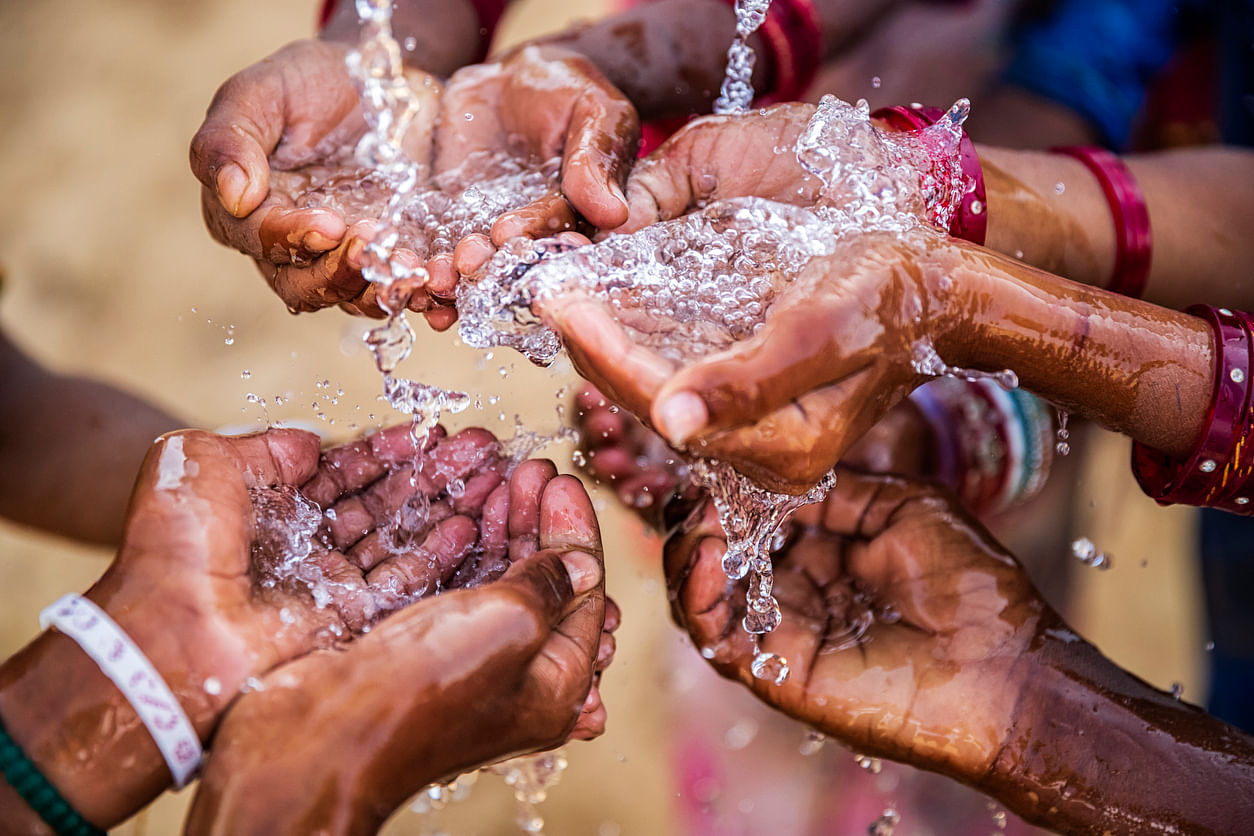
Why should the Union Jal Shakti Minister Gajendra Singh Shekhawat be stoking an old controversy by saying that the Indian government was planning to stop water supplies to Pakistan from the three eastern rivers allocated to India under the Indus Water Treaty?
The ostensible reason for wanting to stop these waters is Pakistan’s refusal to end state-sponsored terrorism. But a statement such as this serves no purpose except to exacerbate an already difficult relationship, given that India is not in a position to fully utilise the waters of the three eastern rivers, namely the Ravi, Beas and Sutlej.
The question of using the waters of the western rivers, namely the Indus, Chenab and Jhelum, allocated to Pakistan, is fraught with even more difficulties.
Following the 2016 terrorist attack on the army camp in Uri in J&K, Prime Minister Modi had declared that “blood and water cannot flow together.” This was a clear warning that India would not hesitate to block Pakistan’s share of the river waters, a threat repeated by the then Minister of Water Resources Nitin Gadkari who, after the Pulwama attack, had tweeted that India would not hesitate to plug the flow of water into Pakistan.
Riverine experts caution that this is not a tap that can be switched on and off at will. If India did decide to stop the flow of water from its eastern rivers, it would mean inundating large tracts of its own farm and forest lands.
Uttam Sinha, a Research Fellow at the Institute for Defence Studies and Analyses and author of “Riverine Neighbourhood and Hydro-politics in South Asia” points out that we already have 3.6 million acre feet (MAF) excess water flowing into Pakistan only because we lack the storage capacity to utilise that water.
The Indus Water Treaty also allows India to use the waters of the Chenab and Jhelum for non-consumptive purposes such as hydro-electricity generation, after which the water flows back to the river. The question of using the Indus waters does not arise because the Indus turns upward from Ladakh through Pakistan-occupied Kashmir, where the Chinese are building two huge dams for Pakistan -- the Bhasha and Bunji -- at a cost of nearly $30 billion.
When India lacks the capacity to use the eastern river waters, where is the question of us utilising the western river waters, too? Experts therefore believe that the key step is to be able to optimise the treaty rather than thinking in terms of abrogating it.
Of course, following the Uri attack, India asked its Ministry of Water Resources to prepare a Detailed Project Report on how we could best utilise the waters of the Chenab and Ravi for run-of-the-river projects. The Baglihar Dam, built on the Chenab, started much before the Uri attack. It has been completed but its utilisation has not been without hiccups. Another dam started on the Jhelum river was the Kishanganga Dam. Pakistan, determined to create impediments, even took the issue of its construction to the International Court of Justice, which ruled in India’s favour. Work on this dam was completed in 2018.
For the present, the swift-flowing Chenab remains the focus of India’s attention. Two DPRs were prepared for the Sawalkot and Bursa dams to be built on the Chenab. But the local population in J&K are strongly opposed to their construction. They believe that these projects are being pushed through without proper environmental assessment and cumulative studies of their impact on the ground. Already the regional environmental departments in J&K have given a negative report on these dams, having raised issues of ecology, seismic concerns and environmental flows were these dams to be operationalised.
The government has therefore changed tack and shifted its focus on the early completion of the Kiru hydroelectric power project being built in Kishtwar tehsil of Doha district at a cost of nearly $800 million. Another dam lined up for early completion is the Pakul Dul Dam.
India has listed 33-36 projects to be developed on these rivers. That is all very well, but the government needs to take note of the fact that China is the new elephant in the room. With Pakistan and China operating in concert, any step India takes to impose curbs on the flow of water into Pakistan could see the Chinese doing the same to us.
Apart from building two massive dams on the Indus river in Gilgit-Baltistan, China is also building 55 reservoirs on the Tibetan plateau from where both the Indus and the Jhelum originate. They are also building 28 dams on the Brahmaputra and its tributaries. This is bound to affect the water-sharing balance in North East India and Bangladesh.
Some experts like Sinha argue that the Indus Waters Treaty has become an albatross around our neck and should be done away with, or at least updated. New designs in dam construction need to be incorporated. There is also a need to ensure better river flows.
There are other experts, such as Prof Vikram Soni of the JNU, a physicist who works on water issues, who maintains that the Indus Water Treaty is one of the few treaties that have worked between India and Pakistan in the last 70 years, and should not be tampered with.
Neither India nor Pakistan and China should be thinking in terms of weaponising water, which is now a swiftly diminishing commodity for all of humanity, but especially in South Asia. Both India and Pakistan are water-scarce countries whose irrigation and drinking needs are met by these rivers. The need of the hour is to opt for better utilisation of our river waters. Also, in the long run, smooth sharing of river waters should help India build bridges of friendship in this hostile neighbourhood.
(The writer is a Delhi-based senior journalist)